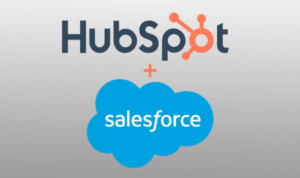In the digital age, data has become a valuable currency, and its volume is growing at an unprecedented rate. This massive influx of data, known as “big data,” has the potential to transform industries by providing valuable insights and opportunities for optimization. When harnessed effectively through data analytics, big data can revolutionize businesses, healthcare, finance, and more. In this article, we’ll delve into the world of big data and analytics and explore how they are reshaping various sectors.
What is Big Data?
Big data refers to vast volumes of data that are generated at high velocity, from a variety of sources, and in different formats. This data can be structured (like databases), semi-structured (like emails or XML files), or unstructured (like social media posts and images). The “3 Vs” characterize big data: volume, velocity, and variety.
Volume: Big data encompasses massive datasets, often too large to be processed using traditional database management tools.
Velocity: Data is generated at an incredible speed. For instance, social media platforms generate enormous amounts of data every second.
Variety: Data comes in diverse formats, from text and numbers to images, videos, and sensor data. The challenge is to make sense of this wide range of information.
The Role of Big Data Analytics
The sheer magnitude and complexity of big data would be overwhelming without data analytics. Big data analytics involves the use of advanced algorithms and data analysis techniques to extract meaningful insights, patterns, and trends from large datasets. These insights can drive decision-making, improve operations, enhance customer experiences, and foster innovation.
Transforming Industries
Let’s explore how big data and analytics are transforming various industries:
- Healthcare: Revolutionizing Diagnosis and Treatment
In healthcare, big data analytics has the potential to revolutionize the field. By analyzing electronic health records, medical images, and genomic data, healthcare providers can identify disease trends, predict patient outcomes, and personalize treatment plans. This can lead to more accurate diagnoses, optimized treatment regimens, and improved patient care.
For example, IBM’s Watson for Oncology is a cognitive computing system that analyzes vast amounts of medical literature, clinical trial data, and patient records to assist oncologists in making treatment recommendations.
- Finance: Enhancing Risk Management and Fraud Detection
The financial sector relies heavily on data analytics for risk assessment, fraud detection, and customer service. By processing transaction data in real time, financial institutions can detect and prevent fraudulent activities. Additionally, predictive analytics is used to assess credit risk and make investment decisions.
For instance, credit card companies use big data analytics to identify unusual spending patterns and alert customers to potential fraud, while investment firms use data analytics to make data-driven investment decisions.
- Retail: Personalizing Customer Experiences
Retail businesses are leveraging big data to personalize customer experiences and optimize supply chain operations. Through the analysis of customer purchase histories, browsing behaviors, and demographics, retailers can recommend products tailored to individual preferences. This not only improves customer satisfaction but also drives sales.
Companies like Amazon and Netflix use big data to recommend products and content based on users’ past interactions, resulting in increased engagement and revenue.
- Manufacturing: Streamlining Operations
Manufacturing is being transformed by the Industrial Internet of Things (IIoT) and big data analytics. Sensors embedded in machines collect data on performance, maintenance needs, and potential issues. Analyzing this data in real time allows manufacturers to predict maintenance requirements, reduce downtime, and optimize production processes.
General Electric (GE) uses big data analytics to monitor the performance of industrial equipment, such as gas turbines and jet engines, to predict when maintenance is needed and prevent costly breakdowns.
- Agriculture: Optimizing Crop Management
Agriculture is adopting big data analytics to enhance crop management and increase yields. Farmers use data from sensors, satellites, and weather stations to monitor soil conditions, weather patterns, and crop health. This information helps them make data-driven decisions regarding irrigation, fertilization, and planting schedules.
For instance, John Deere’s Precision Ag technology uses big data analytics to provide farmers with insights on crop and soil conditions, enabling more efficient and sustainable agriculture practices.
Challenges and Concerns
While big data and analytics offer numerous opportunities, they also present challenges:
- Data Security: Handling large volumes of data requires robust security measures to protect sensitive information from breaches and cyberattacks.
- Data Quality: The accuracy and reliability of data are essential. Garbage in, garbage out – inaccurate data can lead to flawed insights and decisions.
- Privacy Concerns: As businesses collect and analyze large amounts of personal data, concerns about privacy and data protection have grown. Striking the right balance between data-driven innovation and privacy is crucial.
- Skill Shortages: There is a shortage of data scientists and analysts with the expertise to handle big data effectively.
- Legal and Ethical Issues: Compliance with data protection laws, such as GDPR, is essential. Ethical concerns also arise, particularly in cases where data analytics can lead to biased or discriminatory outcomes.
The Future of Big Data and Analytics
The future of big data and analytics is bright, with continued growth and innovation. Here are some key trends and developments to watch for:
- Artificial Intelligence and Machine Learning: AI and machine learning will play a significant role in automating data analysis, enabling predictive and prescriptive analytics.
- Edge Analytics: Edge computing, which processes data closer to its source, will become more critical, particularly for real-time analytics and decision-making.
- Data Monetization: Organizations will increasingly explore ways to monetize their data, generating new revenue streams.
- Data Governance and Ethics: The importance of data governance and ethical considerations will continue to grow, prompting businesses to prioritize responsible data practices.
- Interoperability: As data sources and platforms diversify, ensuring interoperability and data integration will be key to success.
Conclusion
Big data and analytics are transforming industries, offering insights, efficiencies, and innovations previously unimaginable. From healthcare to finance, retail to manufacturing, and beyond, the power of big data is reshaping how we live and work. While challenges such as data security and privacy persist, the potential benefits are too significant to ignore. With continued advancements in technology and a commitment to responsible data practices, big data and analytics have the potential to drive the future of industry and innovation.
















+ There are no comments
Add yours